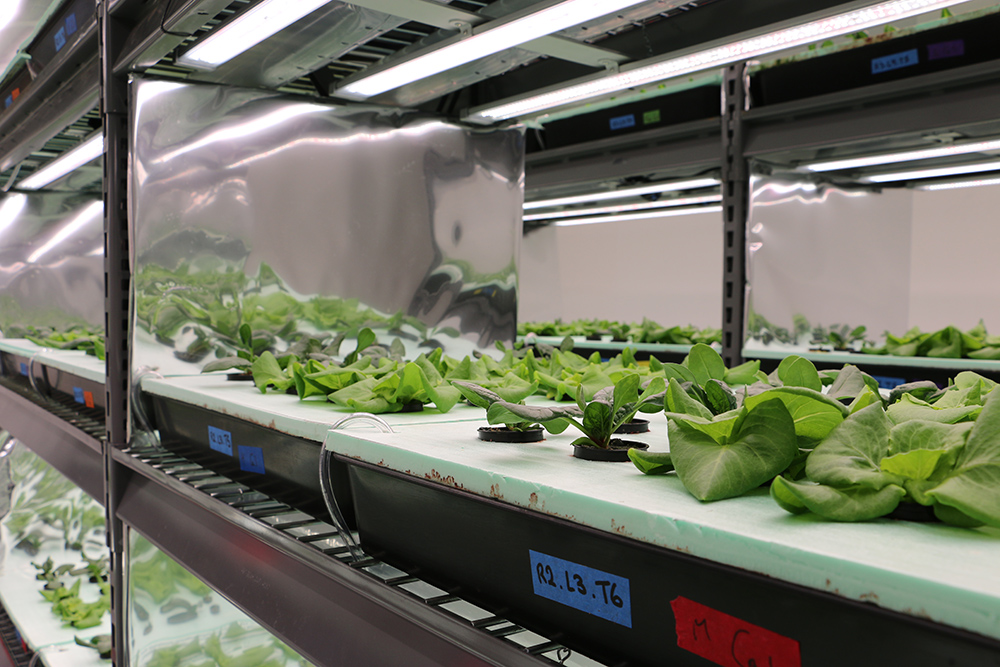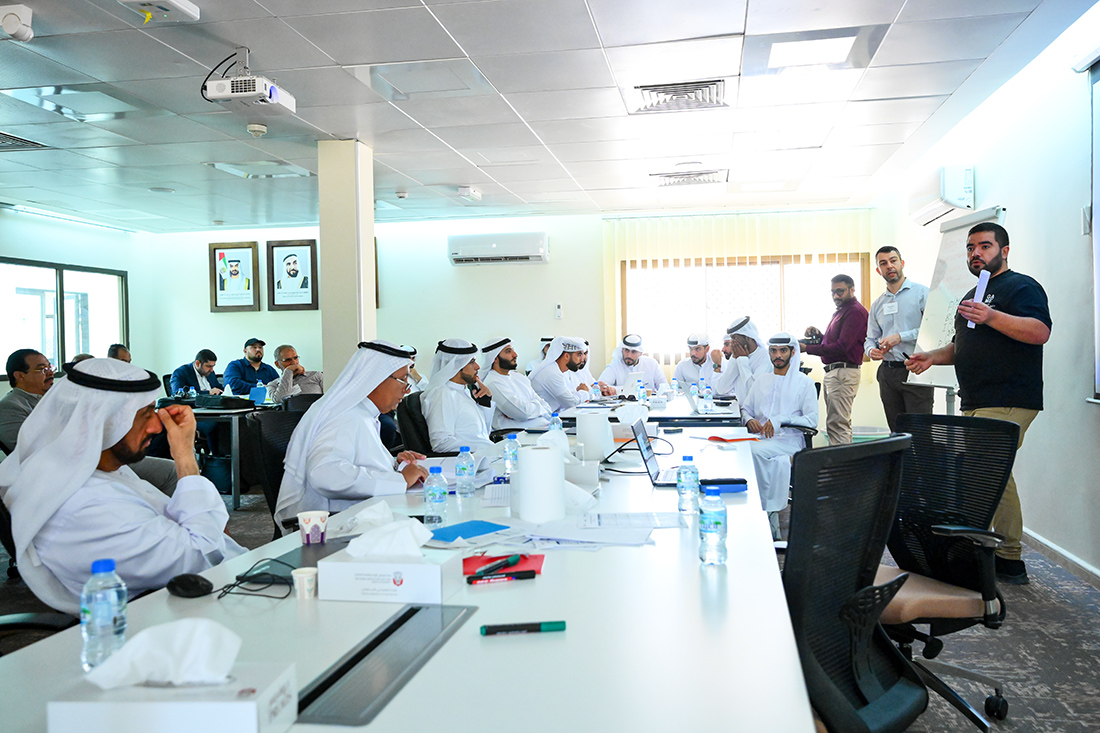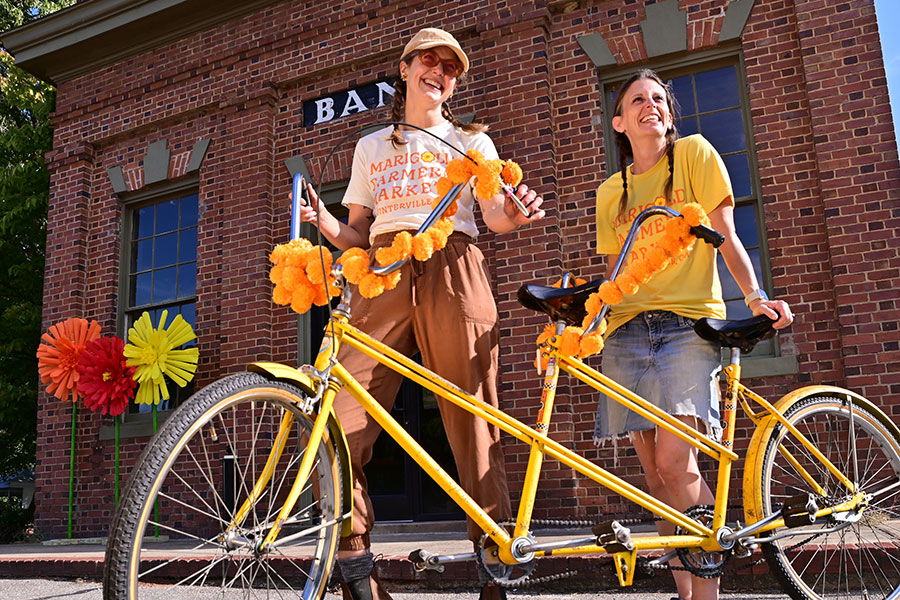
Driving through rural Georgia involves miles of sprawling farmland — cotton, peanuts or any of the crops that make agriculture Georgia’s No. 1 industry. But on the campus of the University of Georgia, the farms are going … up.
Vertical farming is one component of the broader discipline of controlled environment agriculture (CEA), defining the production of specialty crops — edible, medicinal and ornamental — in indoor, soil-free systems. Technology provides control over environmental factors which affect plant growth and quality, including light, humidity, temperature, carbon dioxide and nutrient levels.
Thanks in part to a new partnership between the Ferrarezi Lab in UGA’s College of Agricultural and Environmental Sciences (CAES) and Agrify, a company that produces proprietary microenvironment-controlled vertical farming units, the CEA program at CAES has established two large-scale vertical farms on campus.
Agrify donated 26 4-by-4-foot light fixtures to the project, expanding research capacity. The $26,000 investment was part of the approximate overall $120,000 project cost.
“Indoor vertical farms rely solely on artificial lighting. These farms grow crops entirely indoors in a warehouse or shipping container,” said Rhuanito Ferrarezi, associate professor of controlled environment agriculture in the CAES Department of Horticulture. “In some of these farms crops grow along vertical columns, and in others they grow horizontally in stacked rows like the stories of a skyscraper. One advantage of relying on LED lights is that they allow plants to grow consistently and reliably 365 days of the year, regardless of weather or seasonality.”
Another advantage of CEA is the precise control of light spectrum, intensity and duration, which allows for the adjustment of many variables, including flavor profiles. For example, Ferrarezi pointed to producing spicier mustard greens or more peppery-tasting arugula.
“Our goal is to train the next generation of horticulturists in using the environmental manipulation needed for an operational vertical farm,” Ferrarezi said. “The LED light donation is unique because the lights allow us to use high light intensities when performing experiments.”
The adjustable-spectrum lights have a beam angle of 120 degrees and an average lifetime of approximately 50,000 hours, or 5.7 years if the lights are operated 24 hours per day.

“This partnership is an incredible opportunity for Agrify to give back to the agricultural and academic communities who have given so much to Agrify,” said David Kessler, chief science officer at Agrify. “One of Agrify’s research and manufacturing facilities, located in Covington, Georgia, has enabled this partnership to grow beyond equipment and now includes an internship program and joint Ph.D. research opportunities. We look forward to being able to help further the CEA community’s understanding of the intersection of photobiology and environmental control systems.”
The two UGA growing rooms will allow researchers to complete replicated trials, testing two to three different factors on each plant. Current research projects in the vertical farms include comparing the performance of different hydroponic growing systems in lettuce and strawberries, comparing plant response and resource utilization across multiple fertilizer management strategies and light intensities, plant sap analysis to optimize fertilizer in CEA crops, the influence of airflow on calcium uptake on lettuce and spinach in vertical farming, and more.
At a ribbon cutting in October, Marc van Iersel, Vincent J. Dooley Professor in the Department of Horticulture, shared how the state-of-the-art research space was once a dilapidated building full of abandoned equipment, including a cooler that they converted into the first vertical farm in the state of Georgia.
“It’s really exciting to see the growth of controlled environment agriculture, our department and the college,” he said. “This is literally a growing field.”
At the ribbon cutting, CAES Dean and Director Nick T. Place shared his excitement at seeing students at all levels – undergraduate, master’s, doctoral and postdoctoral – working on CEA projects, emphasizing how the work is integral to the college’s initiative to make CAES the number one college of agriculture and environmental sciences in the nation.
“We are doing that by putting ourselves on the map with our research programs, our teaching programs, our Extension programs and making sure that we’re having an incredible impact all across the state of Georgia and beyond,” Place said.
Place, Ferrarezi, horticulture Department Head Leo Lombardini and other CAES faculty and staff recently toured the state, speaking to industry leaders who repeatedly mentioned the growing CEA industry and the need for research to support it.
“There is a tremendous opportunity; I see it as a key part of the work we are doing to elevate the college,” Place said. “Part of that is in partnership with industry, which is why I appreciate Agrify’s support of this project. I see this as the first of many projects we need to complete with Agrify and other industry partners to advance what we do overall with technology.”
To learn more about controlled environment agriculture at CAES, visit ferrarezilab.uga.edu and hortphys.uga.edu.



